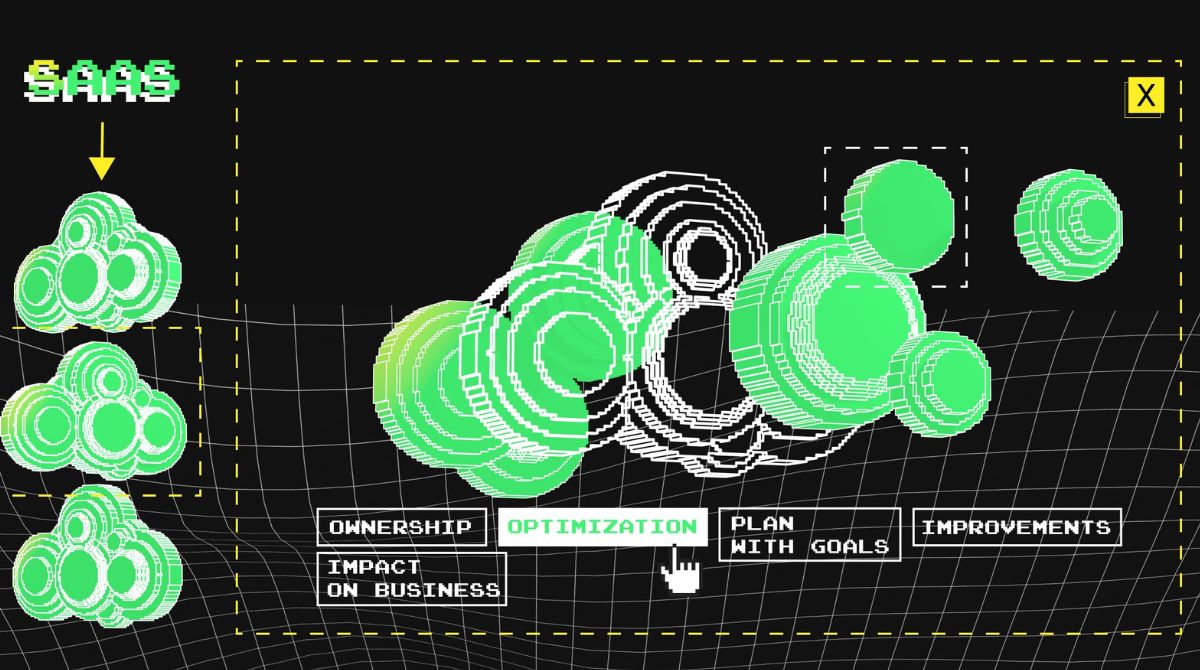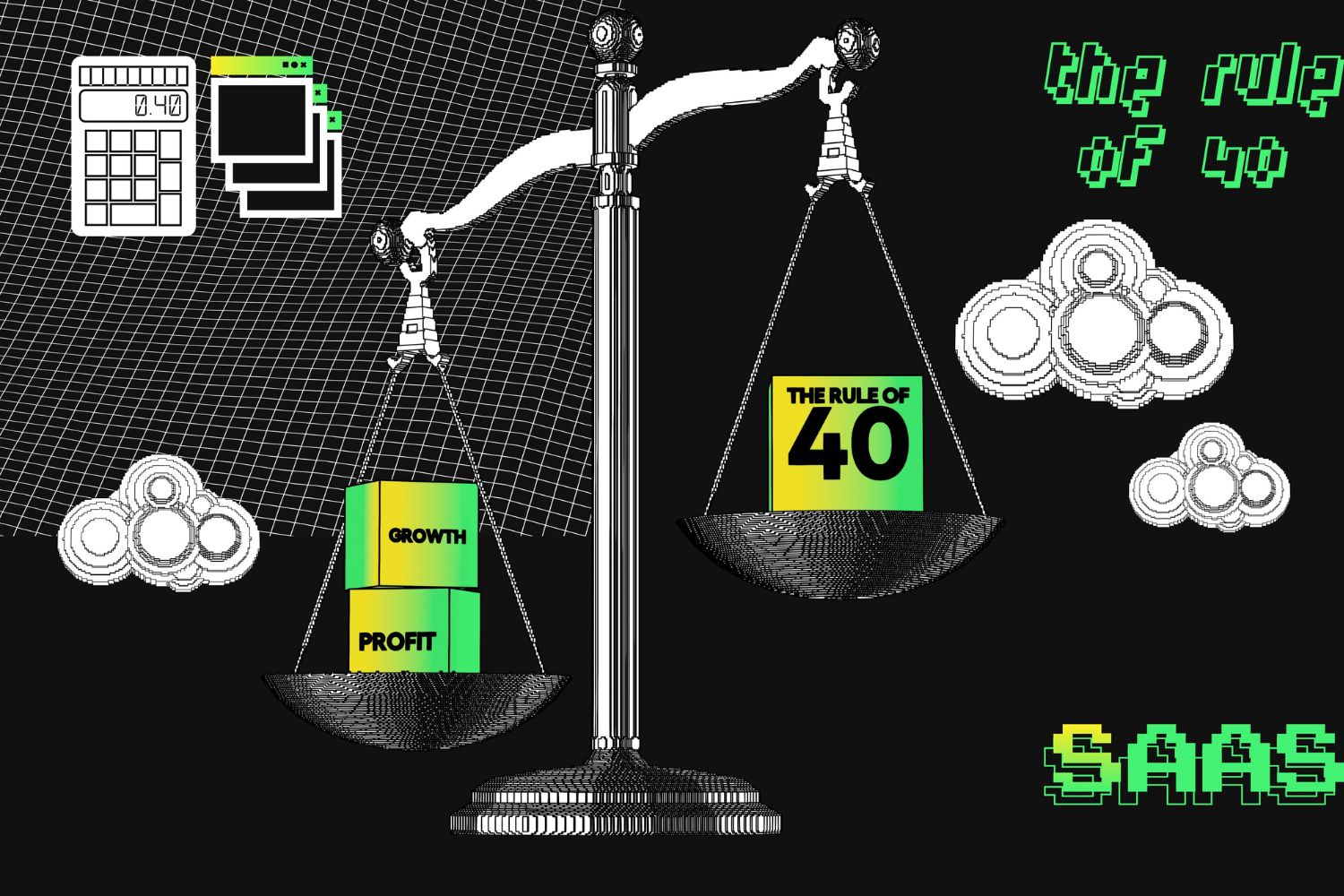Introduction
In today’s digital age, businesses rely heavily on software solutions to streamline operations, enhance efficiency, and drive growth. One such software delivery model that has gained immense popularity is Software-as-a-Service (SaaS). SaaS is a cloud-based approach where software applications are hosted and maintained by a third-party provider and accessed by users over the internet.
With SaaS, companies can leverage a wide range of applications without the need for costly on-premises infrastructure and lengthy installation processes. These applications cover various aspects of business operations, including customer management, human resources, project management, accounting, and more.
This article will explore several examples of SaaS applications and highlight how they can benefit businesses across different industries. From customer relationship management (CRM) to social media management tools, we will delve into the key features and advantages of each category.
Whether you are a small startup, a growing mid-sized company, or a large enterprise, understanding the true potential of SaaS applications can help you choose the right tools to meet your specific business needs. So, let’s dive into the world of SaaS examples and discover how they can revolutionize your operations.
Customer Relationship Management (CRM)
Customer Relationship Management (CRM) software is a vital tool for businesses looking to optimize their customer interactions and build lasting relationships. SaaS CRM solutions offer a centralized platform that enables companies to manage their customer data, track sales activities, and improve overall customer satisfaction.
SaaS CRM applications provide a multitude of features, including contact management, lead tracking, sales pipeline management, and customer support ticketing. These solutions are designed to streamline the sales process, empower sales teams, and help businesses deliver personalized customer experiences.
One popular example of a SaaS CRM is Salesforce, a cloud-based platform that offers comprehensive functionalities to manage customer data, sales processes, marketing campaigns, and customer support. With Salesforce, businesses can track their interactions with prospects and customers, monitor sales performance, and leverage advanced analytics to make data-driven decisions.
Another notable SaaS CRM example is HubSpot CRM, which provides a user-friendly interface and a wide range of tools to manage contact information, track deals, and automate sales processes. HubSpot CRM also integrates seamlessly with other HubSpot marketing and customer service tools, offering a holistic solution for businesses looking to streamline their sales and marketing efforts.
Benefits of SaaS CRM solutions include improved efficiency, enhanced collaboration, and increased customer satisfaction. By centralizing customer data in a single platform, sales teams can access real-time information, track customer interactions, and deliver personalized experiences. SaaS CRM also enables businesses to automate repetitive tasks, such as email follow-ups or lead assignment, freeing up valuable time for sales representatives to focus on building relationships and closing deals.
Overall, SaaS CRM solutions provide businesses with the tools they need to manage and nurture customer relationships effectively. Whether you’re a small startup or a multinational corporation, implementing a SaaS CRM system can help you streamline your sales processes, improve customer satisfaction, and drive revenue growth.
Human Resources Management (HRM)
Human Resources Management (HRM) plays a critical role in managing a company’s most valuable asset: its employees. SaaS HRM solutions provide businesses with efficient tools to streamline their HR processes, automate administrative tasks, and foster a positive employee experience.
A popular example of SaaS HRM software is Workday, which offers a comprehensive suite of HR management modules, including employee onboarding, payroll management, performance evaluation, and talent acquisition. With Workday, businesses can centralize employee data, simplify HR workflows, and ensure compliance with labor regulations.
Another notable SaaS HRM example is BambooHR, a user-friendly platform that enables businesses to manage employee information, track time off, and facilitate employee self-service. BambooHR also offers integrated recruitment capabilities, making it easier for companies to attract, hire, and onboard top talent.
SaaS HRM solutions provide several benefits to businesses, including increased efficiency, improved accuracy, and enhanced employee engagement. By automating routine HR tasks, companies can minimize errors, reduce paperwork, and free up time for HR professionals to focus on strategic initiatives.
Additionally, SaaS HRM systems allow employees to access and update their own information, request time off, and view company policies, fostering self-service and empowering employees to take control of their HR-related needs. This improves transparency and communication within the organization while reducing administrative burdens on HR teams.
Furthermore, SaaS HRM platforms often come bundled with robust reporting and analytics capabilities. This enables HR professionals to gain valuable insights into workforce trends, identify areas for improvement, and make data-driven decisions to optimize their HR strategies.
Overall, SaaS HRM solutions provide businesses with the tools they need to efficiently manage their human resources. Whether you’re a small business or a large corporation, implementing a SaaS HRM system can streamline your HR processes, improve employee engagement, and contribute to the overall success of your organization.
Project Management
Efficient project management is crucial for businesses to successfully plan, execute, and deliver projects on time and within budget. SaaS project management tools provide companies with the necessary features and capabilities to streamline project workflows, facilitate collaboration, and ensure project success.
One popular example of a SaaS project management tool is Asana, which offers a user-friendly interface and a wide range of project management functionalities. With Asana, teams can create tasks, set deadlines, assign responsibilities, and track project progress in real-time. The platform also provides communication features, allowing team members to collaborate, share files, and provide updates within the context of the project.
Another notable SaaS project management example is Trello, known for its intuitive board-based interface. Trello allows teams to create boards, cards, and lists to visualize tasks, prioritize work, and monitor progress. With features like due dates, checklists, and file attachments, Trello enables teams to stay organized and effectively manage projects of any size.
Benefits of SaaS project management tools include improved team collaboration, better task visibility, and enhanced project monitoring. These tools provide a centralized platform where team members can access project information, communicate, and share files, increasing transparency and reducing the risk of miscommunication.
SaaS project management tools also offer features such as task dependencies, Gantt charts, and milestone tracking, enabling project managers to effectively plan and monitor project timelines. Real-time project dashboards and progress updates provide valuable insights into project performance, allowing managers to proactively address any issues or risks that may arise.
Furthermore, SaaS project management tools often integrate with other productivity and communication tools, such as Slack or Google Drive, creating a seamless workflow and eliminating silos between different applications.
Overall, SaaS project management tools provide businesses with the necessary software infrastructure to efficiently manage projects and ensure their successful completion. Whether you’re a small team or a large organization, leveraging a SaaS project management tool can improve collaboration, boost productivity, and drive project success.
Accounting and Financial Management
Effective accounting and financial management are vital for businesses of all sizes to maintain financial health and make informed decisions. SaaS accounting and financial management solutions provide companies with robust tools to streamline financial processes, automate bookkeeping tasks, and gain valuable insights into their financial data.
One popular example of a SaaS accounting software is QuickBooks Online, which offers a wide range of features to manage invoicing, expenses, bank reconciliations, and financial reporting. QuickBooks Online simplifies bookkeeping tasks and provides real-time visibility into cash flow, enabling businesses to make data-driven financial decisions.
An alternative SaaS accounting solution is Xero, known for its intuitive interface and comprehensive set of financial management tools. Xero provides features such as bank feeds, expense tracking, multi-currency support, and integrations with other business applications, making it a powerful choice for businesses looking to efficiently manage their finances.
Benefits of SaaS accounting and financial management solutions include improved accuracy, increased efficiency, and enhanced financial visibility. These platforms automate repetitive accounting tasks, such as data entry and reconciliation, minimizing human errors and saving valuable time for finance departments.
SaaS accounting tools also enable businesses to generate financial reports, such as profit and loss statements, balance sheets, and cash flow statements, with just a few clicks. Real-time financial visibility allows businesses to monitor their financial performance closely, identify trends, and make informed decisions to improve profitability.
Furthermore, SaaS accounting solutions often integrate with bank accounts, payment gateways, and other financial applications, allowing for seamless data synchronization and reducing the need for manual data entry.
Overall, SaaS accounting and financial management solutions provide businesses with the necessary tools to efficiently manage their financial processes. Whether you’re a small business owner or a finance professional, leveraging a SaaS accounting software can streamline your bookkeeping, improve financial accuracy, and provide valuable insights to drive the success of your business.
Enterprise Resource Planning (ERP)
Enterprise Resource Planning (ERP) systems are comprehensive software solutions that integrate various business functions and processes into a single platform. SaaS ERP solutions provide businesses with the tools to streamline operations, improve collaboration, and enhance overall efficiency.
One well-known example of a SaaS ERP system is NetSuite, which offers a suite of applications to manage various aspects of business operations, including financials, inventory, and procurement. NetSuite provides real-time visibility into key business metrics, automates critical processes, and enables businesses to make data-driven decisions.
Another notable SaaS ERP example is SAP Business ByDesign, designed to meet the needs of mid-sized businesses. This cloud-based solution provides integrated features for finance, sales, purchasing, production, and customer service, allowing businesses to streamline their operations and achieve greater control and visibility.
Benefits of SaaS ERP systems include increased operational efficiency, improved data accuracy, and enhanced decision-making capabilities. These solutions centralize data from different departments into a single database, eliminating data silos and providing a holistic view of business information.
SaaS ERP systems also streamline business processes by automating workflows, reducing manual work, and improving overall productivity. They enable businesses to track inventory levels, manage orders, monitor production processes, and optimize resource allocation, resulting in improved operational efficiency and customer satisfaction.
Furthermore, SaaS ERP solutions often come with robust reporting and analytics capabilities, allowing businesses to gain valuable insights into their performance, identify trends, and make informed decisions. Real-time reporting enables quick and accurate decision-making, enabling businesses to respond promptly to market changes and drive growth.
Integration is another key advantage of SaaS ERP systems. They can seamlessly integrate with other business applications, such as CRM and e-commerce platforms, ensuring data consistency and providing a unified experience for users.
Overall, SaaS ERP systems provide businesses with a comprehensive and integrated solution to manage their operations. Whether you’re a growing mid-sized business or a large enterprise, leveraging a SaaS ERP system can streamline processes, improve efficiency, and enable data-driven decision-making for the overall success of your organization.
Content Management System (CMS)
A Content Management System (CMS) is a software application that allows businesses to create, manage, and publish digital content on their websites. SaaS CMS solutions provide companies with user-friendly tools to streamline content creation, facilitate collaboration, and enhance website management.
One popular example of a SaaS CMS is WordPress.com, which offers a powerful yet easy-to-use platform for building and managing websites. With WordPress.com, businesses can create and customize their websites using a wide range of templates and plugins, easily update content, and integrate with various marketing tools.
Another notable SaaS CMS example is Wix, known for its drag-and-drop website builder and extensive collection of templates. Wix enables businesses to create visually stunning websites without the need for coding skills, providing a seamless and intuitive website-building experience.
Benefits of SaaS CMS solutions include simplified content creation, improved website management, and enhanced SEO capabilities. These platforms provide intuitive interfaces and content editors, making it easy for businesses to create and update web pages, blog posts, and other digital content.
SaaS CMS solutions also allow businesses to collaborate with multiple users, enabling teams to work together on content creation, review, and approval. This promotes efficient workflows and ensures a consistent and up-to-date online presence.
Furthermore, SaaS CMS platforms often include built-in SEO features, such as customizable meta tags, XML sitemaps, and search engine-friendly URLs. These features help businesses optimize their websites for search engines, improve visibility in search results, and attract more organic traffic.
Additionally, SaaS CMS solutions offer various integrations with third-party applications, such as analytics tools, e-commerce platforms, and marketing automation systems. This allows businesses to enhance their website functionality and leverage additional tools to optimize their online presence.
Overall, SaaS CMS solutions provide businesses with the necessary tools to efficiently manage their website content and enhance their online presence. Whether you’re a small business owner or a marketing professional, leveraging a SaaS CMS can simplify content creation, streamline website management, and help you achieve your online goals.
E-commerce Platforms
E-commerce platforms are essential for businesses looking to sell products or services online. SaaS e-commerce solutions provide businesses with the necessary tools and functionalities to set up, manage, and optimize their online stores, enabling them to reach a global customer base.
One well-known example of a SaaS e-commerce platform is Shopify, which offers a comprehensive suite of features to create and customize online stores. With Shopify, businesses can easily set up their store, manage inventory, process payments, and track orders. The platform also provides a range of themes, plugins, and integrations to enhance the functionality and design of the store.
Another notable SaaS e-commerce example is BigCommerce, known for its scalability and robust features. BigCommerce offers a powerful platform for businesses of all sizes, with features like multi-channel selling, flexible product options, and built-in marketing tools.
Benefits of SaaS e-commerce platforms include simplified store setup, seamless integrations, and enhanced customer experience. These platforms provide user-friendly interfaces and templates, enabling businesses to quickly launch their online stores and start selling products or services. Additionally, they often offer secure payment gateways and shipping integrations, allowing businesses to provide a seamless and convenient shopping experience for customers.
SaaS e-commerce platforms also provide extensive customization options, allowing businesses to tailor their online stores to their brand identity and customer preferences. This includes the ability to customize product listings, offer discounts and promotions, and personalize the shopping experience for individual customers.
Furthermore, SaaS e-commerce platforms often come with built-in marketing tools, such as email marketing, SEO optimization, and social media integrations. This enables businesses to promote their products or services, drive traffic to their online stores, and ultimately increase sales.
Moreover, SaaS e-commerce platforms frequently offer analytics and reporting capabilities, providing businesses with valuable insights into sales data, customer behavior, and overall store performance. This allows businesses to make data-driven decisions and optimize their e-commerce strategies for business growth.
In summary, SaaS e-commerce platforms provide businesses with the necessary tools to establish, manage, and grow their online stores. Whether you’re a small business owner or a larger enterprise, leveraging a SaaS e-commerce platform can simplify the process of selling online, enhance customer experience, and drive sales and revenue.
Email Marketing Software
Email marketing remains a powerful and effective tool for businesses to connect with their audience, build relationships, and drive conversions. SaaS email marketing software provides businesses with comprehensive tools and features to automate email campaigns, personalize messages, and track campaign performance.
One popular example of a SaaS email marketing platform is Mailchimp, known for its user-friendly interface and robust features. Mailchimp offers features such as email templates, segmentation capabilities, marketing automation, and detailed reporting, making it an ideal choice for businesses of all sizes.
Another notable SaaS email marketing example is Campaign Monitor, which provides a range of customizable templates, advanced segmentation options, and A/B testing capabilities. Campaign Monitor also offers integrations with other marketing tools, allowing businesses to create cohesive and targeted marketing campaigns.
Benefits of SaaS email marketing software include improved automation, increased personalization, and enhanced campaign tracking. These platforms enable businesses to automate their email campaigns, ensuring timely and relevant messages are sent to the right audience. With features like drip campaigns and triggered emails, businesses can nurture leads and engage with customers in a more personalized and targeted manner.
SaaS email marketing software also allows businesses to segment their email lists based on various criteria, such as demographics, purchase history, or engagement levels. This enables businesses to deliver more tailored and relevant content to their subscribers, improving the overall effectiveness of their email campaigns.
Furthermore, SaaS email marketing platforms provide detailed analytics and reporting, giving businesses insights into key email metrics, such as open rates, click-through rates, and conversions. This information enables businesses to measure the success of their campaigns, identify areas for improvement, and make data-driven decisions to optimize future email marketing strategies.
Additionally, many SaaS email marketing platforms offer integrations with other software, such as CRM systems or e-commerce platforms. This allows businesses to streamline their marketing efforts, synchronize customer data, and create a cohesive customer experience across multiple channels.
In summary, SaaS email marketing software provides businesses with powerful tools to automate, personalize, and track their email marketing efforts. Whether you’re a small business owner or a marketing professional, leveraging a SaaS email marketing platform can help you effectively engage with your audience, drive conversions, and achieve your marketing goals.
Customer Support and Helpdesk
Providing exceptional customer support is crucial for businesses to build trust, loyalty, and customer satisfaction. SaaS customer support and helpdesk software offer businesses the necessary tools to efficiently manage customer inquiries, provide timely assistance, and deliver a seamless support experience.
One popular example of a SaaS customer support and helpdesk platform is Zendesk, which offers a comprehensive range of features to manage customer inquiries across multiple channels, including email, live chat, and social media. Zendesk provides efficient ticket management, knowledge base management, and automation capabilities to streamline support processes.
Another notable SaaS customer support and helpdesk example is Freshdesk, known for its intuitive interface and robust ticketing system. Freshdesk enables businesses to centralize customer inquiries, assign tickets to the appropriate agents, track ticket status, and provide timely responses.
Benefits of SaaS customer support and helpdesk software include improved response times, enhanced ticket management, and increased customer satisfaction. These platforms enable businesses to efficiently handle customer inquiries, ensuring prompt responses and resolution of issues.
SaaS customer support software often comes with features like ticket assignment and routing, ticket prioritization, and escalation rules, allowing support teams to stay organized and effectively manage customer requests. This ensures that inquiries are addressed in a timely manner and customer expectations are met.
Furthermore, SaaS customer support and helpdesk solutions offer self-service options, such as knowledge bases and frequently asked questions (FAQs), allowing customers to find answers to common questions without contacting support agents. By providing easily accessible resources, businesses can empower customers to find solutions on their own and reduce the volume of support inquiries.
Moreover, SaaS customer support platforms offer robust reporting and analytics capabilities, allowing businesses to track key metrics like response times, ticket volume, and customer satisfaction ratings. This data provides insights into support team performance and enables businesses to identify areas for improvement.
Additionally, many SaaS customer support and helpdesk platforms offer integrations with other business tools, such as CRM systems or e-commerce platforms. This integration enables businesses to have a holistic view of customer interactions and provide personalized support based on customer history and preferences.
In summary, SaaS customer support and helpdesk software provide businesses with the necessary tools to efficiently manage customer inquiries, improve response times, and enhance the overall support experience. Whether you’re a small business or a large enterprise, leveraging a SaaS customer support platform can help you provide exceptional support, foster customer loyalty, and drive business growth.
Social Media Management Tools
Social media has become a powerful platform for businesses to connect with their audience, promote their brand, and drive engagement. SaaS social media management tools offer businesses comprehensive features and functionalities to efficiently manage their social media presence, schedule content, and analyze performance.
One popular example of a SaaS social media management tool is Hootsuite, known for its centralized dashboard and robust social media scheduling capabilities. Hootsuite allows businesses to manage multiple social media accounts, schedule posts in advance, monitor mentions and comments, and analyze social media performance.
Another notable SaaS social media management example is Sprout Social, which provides a suite of features for social media content scheduling, engagement, and analytics. Sprout Social offers tools to manage social media messages, collaborate with team members, and measure the impact of social media efforts.
Benefits of SaaS social media management tools include streamlined content scheduling, increased social media engagement, and enhanced analytics. These platforms provide businesses with the ability to schedule social media posts in advance, ensuring a consistent presence across multiple platforms.
SaaS social media management tools also offer features such as social listening, allowing businesses to monitor brand mentions, industry trends, and customer sentiment. This enables businesses to engage with their audience, respond to customer inquiries, and proactively manage their online reputation.
Furthermore, SaaS social media management tools provide analytics and reporting capabilities, allowing businesses to track key metrics such as audience growth, engagement rates, and content performance. This data provides insights into the effectiveness of social media strategies and helps businesses refine their approach to drive better results.
Moreover, many SaaS social media management platforms offer integrations with other marketing tools, such as CRM systems or email marketing software. This integration allows businesses to have a holistic view of customer interactions and gain a deeper understanding of the impact of social media on their overall marketing efforts.
Additionally, SaaS social media management tools often offer features for social media advertising, allowing businesses to create and manage paid social media campaigns. This enables businesses to reach a larger audience, target specific demographics, and drive conversions through social media platforms.
In summary, SaaS social media management tools provide businesses with the necessary tools and features to efficiently manage their social media presence, engage with their audience, and measure the impact of their social media efforts. Whether you’re a small business or a larger enterprise, leveraging a SaaS social media management platform can help you effectively manage your social media presence, drive engagement, and achieve your social media marketing goals.
Collaboration and Productivity Tools
Effective collaboration and productivity are key components of a successful business. SaaS collaboration and productivity tools provide businesses with the necessary features and functionalities to foster teamwork, streamline communication, and enhance overall productivity.
One popular example of a SaaS collaboration tool is Slack, known for its real-time messaging, file sharing, and team collaboration capabilities. Slack enables businesses to create channels for specific projects or teams, allowing for seamless communication and collaboration. It also integrates with various other tools, such as project management platforms or video conferencing software.
Another notable SaaS collaboration and productivity tool is Microsoft Teams, which offers a comprehensive suite of features for chat, video conferencing, file sharing, and project management. With Microsoft Teams, businesses can enhance collaboration, centralize communication, and increase productivity within their teams.
Benefits of SaaS collaboration and productivity tools include improved communication, enhanced teamwork, and streamlined workflows. These tools provide businesses with centralized platforms where team members can share ideas, files, and updates in real-time, eliminating the need for lengthy email threads or disjointed communication.
SaaS collaboration tools also enable businesses to organize and track projects effectively. With features like task assignment, progress tracking, and shared calendars, team members can stay aligned and ensure that project timelines are met. Additionally, these tools often provide project visibility to stakeholders, promoting transparency and effective project management.
Furthermore, SaaS collaboration tools foster a sense of teamwork and engagement among team members. By providing features for group discussions, video conferences, and virtual meeting rooms, these tools facilitate collaboration and enable remote teams to work together efficiently.
Moreover, many SaaS collaboration and productivity tools offer integrations with other business applications, such as project management platforms, document sharing services, or customer relationship management (CRM) systems. This integration allows businesses to integrate their workflows, streamline processes, and enhance overall productivity.
Additionally, SaaS collaboration tools often come with mobile applications, allowing team members to collaborate and stay connected on the go. This flexibility ensures that employees can access information and contribute to projects from anywhere, enhancing productivity and efficiency.
In summary, SaaS collaboration and productivity tools provide businesses with the necessary tools and features to enhance communication, foster teamwork, and streamline workflows. Whether you have an in-office team or a remote workforce, leveraging a SaaS collaboration tool can improve collaboration, increase productivity, and drive the success of your business.
Data Analytics and Business Intelligence
Data analytics and business intelligence play a critical role in helping businesses make informed decisions, identify trends, and gain valuable insights into their operations. SaaS data analytics and business intelligence tools provide businesses with the necessary capabilities to collect, analyze, and visualize data, enabling them to drive strategic and data-driven decision-making.
One well-known example of a SaaS data analytics and business intelligence tool is Tableau, which offers a robust platform for analyzing and visualizing data. Tableau allows businesses to connect to various data sources, create interactive dashboards and reports, and gain actionable insights from their data.
Another notable SaaS data analytics and business intelligence tool is Google Analytics, which provides businesses with valuable data on website traffic, user behavior, and conversion rates. Google Analytics offers comprehensive reporting features, intuitive dashboards, and advanced segmentation capabilities.
Benefits of SaaS data analytics and business intelligence tools include improved decision-making, enhanced data visualization, and increased efficiency in analyzing large datasets. These tools allow businesses to transform raw data into meaningful insights, enabling them to uncover patterns, trends, and correlations that can drive business strategies and initiatives.
SaaS data analytics tools also offer advanced data visualization capabilities, allowing businesses to present data in a visually appealing and easily understandable format. Interactive dashboards, charts, and graphs enable stakeholders to quickly grasp key insights and make data-driven decisions.
Furthermore, SaaS data analytics and business intelligence platforms often provide self-service analytics features, allowing business users to explore and analyze data without relying on IT or technical teams. This empowers business users to extract insights on their own, freeing up resources and enhancing overall efficiency.
Moreover, SaaS data analytics tools often come with features for data integration and data cleansing, enabling businesses to consolidate data from multiple sources, cleanse it, and ensure data accuracy. This leads to reliable insights and eliminates data discrepancies that can impact decision-making.
Additionally, SaaS data analytics tools frequently offer advanced analytics capabilities, including predictive analytics and machine learning. These features allow businesses to forecast future trends, identify opportunities, and automate decision-making processes based on historical data and patterns.
Overall, SaaS data analytics and business intelligence platforms provide businesses with the necessary tools and functionalities to transform data into actionable insights. Whether you’re a small business or a large enterprise, leveraging a SaaS data analytics and business intelligence tool can enhance decision-making, drive innovation, and help you stay ahead in today’s data-driven business landscape.
Learning Management System (LMS)
A Learning Management System (LMS) is a software application that enables businesses and educational institutions to create, manage, and deliver online courses and training programs. SaaS Learning Management Systems provide businesses with robust tools to facilitate e-learning, track learner progress, and create interactive learning experiences.
One popular example of a SaaS LMS is Moodle, an open-source platform that offers a wide range of features for managing and delivering online courses. Moodle provides tools for content creation, assessments, discussions, and grading, making it a versatile option for businesses and educational institutions.
Another notable SaaS LMS example is Canvas, known for its user-friendly interface and comprehensive set of features. Canvas offers tools for content authoring, student engagement, and grading, providing a seamless learning experience for both instructors and learners.
Benefits of SaaS LMS platforms include enhanced accessibility, personalized learning experiences, and improved tracking and reporting capabilities. These platforms provide a centralized and online learning environment, enabling learners to access courses from anywhere, at any time. This flexibility promotes accessibility and convenience in the learning process.
SaaS LMS platforms also offer features to personalize learning experiences, such as adaptive learning paths, customized assessments, and interactive multimedia content. By tailoring the learning experience to individual learners’ needs and preferences, businesses can enhance engagement and knowledge retention.
Furthermore, SaaS LMS platforms provide robust tracking and reporting capabilities, allowing instructors and administrators to monitor learner progress, track completion rates, and generate detailed reports. This data-driven approach enables businesses to evaluate the effectiveness of their training programs and make data-informed decisions.
Moreover, many SaaS LMS platforms offer integrations with other learning tools, such as video conferencing software or content authoring tools. This integration promotes a seamless learning experience and enhances the overall functionality of the LMS.
Additionally, SaaS LMS platforms often provide features for collaboration and social learning, such as discussion boards, chat functionalities, and group projects. These features encourage learner interaction, knowledge sharing, and the development of a learning community within the online environment.
In summary, SaaS Learning Management Systems provide businesses with powerful tools to create, manage, and deliver online courses and training programs. Whether you’re a small business or a large educational institution, leveraging a SaaS LMS can enhance accessibility, personalize learning experiences, and track learner progress to ensure efficient and effective training.
Virtual Meeting and Video Conferencing
In today’s digital landscape, virtual meetings and video conferencing have become essential for businesses to connect with remote teams, clients, and stakeholders. SaaS virtual meeting and video conferencing tools provide businesses with the necessary capabilities to host online meetings, collaborate in real-time, and maintain effective communication regardless of geographical barriers.
One popular example of a SaaS virtual meeting and video conferencing tool is Zoom, known for its user-friendly interface and robust features. Zoom allows businesses to host virtual meetings, conduct webinars, and collaborate through video, audio, and chat functionalities. With features like screen sharing, recording, and breakout rooms, Zoom provides a comprehensive solution for teams to connect and collaborate seamlessly.
Another notable SaaS virtual meeting and video conferencing platform is Microsoft Teams, which offers a range of communication tools, including video calls, chat, and file sharing. Microsoft Teams provides businesses with a unified platform for team meetings, departmental collaboration, and even larger webinars or conferences.
Benefits of SaaS virtual meeting and video conferencing tools include improved remote collaboration, increased productivity, and enhanced communication. These tools enable businesses to connect their teams regardless of location, facilitating real-time collaboration and reducing the need for travel expenses.
SaaS virtual meeting and video conferencing platforms offer features such as screen sharing, whiteboarding, and real-time annotations, allowing teams to collaborate on documents, brainstorm ideas, and make decisions together. This drives productivity and the seamless flow of information across teams.
Furthermore, SaaS virtual meeting and video conferencing platforms often provide recording and transcription capabilities. This allows businesses to capture important meetings, training sessions, or presentations for future reference or sharing with team members who couldn’t attend the live session.
Moreover, many SaaS virtual meeting and video conferencing tools offer integrations with other business applications, such as project management tools or customer relationship management (CRM) software. This integration helps streamline workflows and enhances productivity by bringing together different collaboration tools under one platform.
Additionally, SaaS virtual meeting and video conferencing platforms often have mobile applications, enabling participants to join meetings from their mobile devices. This flexibility ensures that teams can connect and collaborate on the go, contributing to increased efficiency and responsiveness.
In summary, SaaS virtual meeting and video conferencing tools provide businesses with the necessary capabilities to connect and collaborate effectively regardless of geographical limitations. Whether you have a remote team or need to communicate with clients or stakeholders around the world, leveraging a SaaS virtual meeting and video conferencing platform can enhance collaboration, boost productivity, and improve overall communication within your organization.
Conclusion
The world of SaaS (Software-as-a-Service) offers a wide array of powerful tools and solutions that can significantly benefit businesses across various industries. From customer relationship management (CRM) to virtual meeting and video conferencing platforms, each SaaS application serves a unique purpose in streamlining operations, enhancing productivity, and driving business growth.
By leveraging SaaS applications, businesses can access sophisticated software solutions without the need for costly infrastructure or complex installation processes. These cloud-based platforms not only provide flexibility and scalability but also offer a range of features and functionalities tailored to specific business needs.
For example, SaaS CRM solutions enable businesses to efficiently manage customer relationships, track sales activities, and optimize customer satisfaction. SaaS project management tools streamline workflows, foster collaboration, and ensure successful project execution. Accounting and financial management software simplify financial processes, enhance accuracy, and provide invaluable insights into business performance.
SaaS content management systems (CMS) empower businesses to create and manage engaging digital content, while email marketing software facilitates effective communication and customer engagement. SaaS customer support and helpdesk tools enable businesses to provide exceptional customer service, and social media management platforms allow businesses to connect with their audience and drive brand engagement.
Moreover, SaaS learning management systems (LMS) facilitate online training and educational programs, while data analytics and business intelligence tools unlock valuable insights from data to support informed decision-making. Collaboration and productivity tools enhance teamwork and communication, virtual meeting and video conferencing platforms connect remote teams and stakeholders, and enterprise resource planning (ERP) systems integrate and optimize various business functions.
Each of these SaaS applications plays a vital role in boosting efficiency, improving productivity, and driving business success. By harnessing the power of SaaS, businesses can stay agile, competitive, and adapt to the ever-evolving digital landscape.
As technology continues to advance, the possibilities with SaaS are limitless. Businesses that embrace SaaS applications can gain a competitive advantage, enhance customer experiences, and drive growth in the digital era. Whether you’re a small startup or a large enterprise, explore the vast realm of SaaS and discover the solutions that will propel your business forward.

























